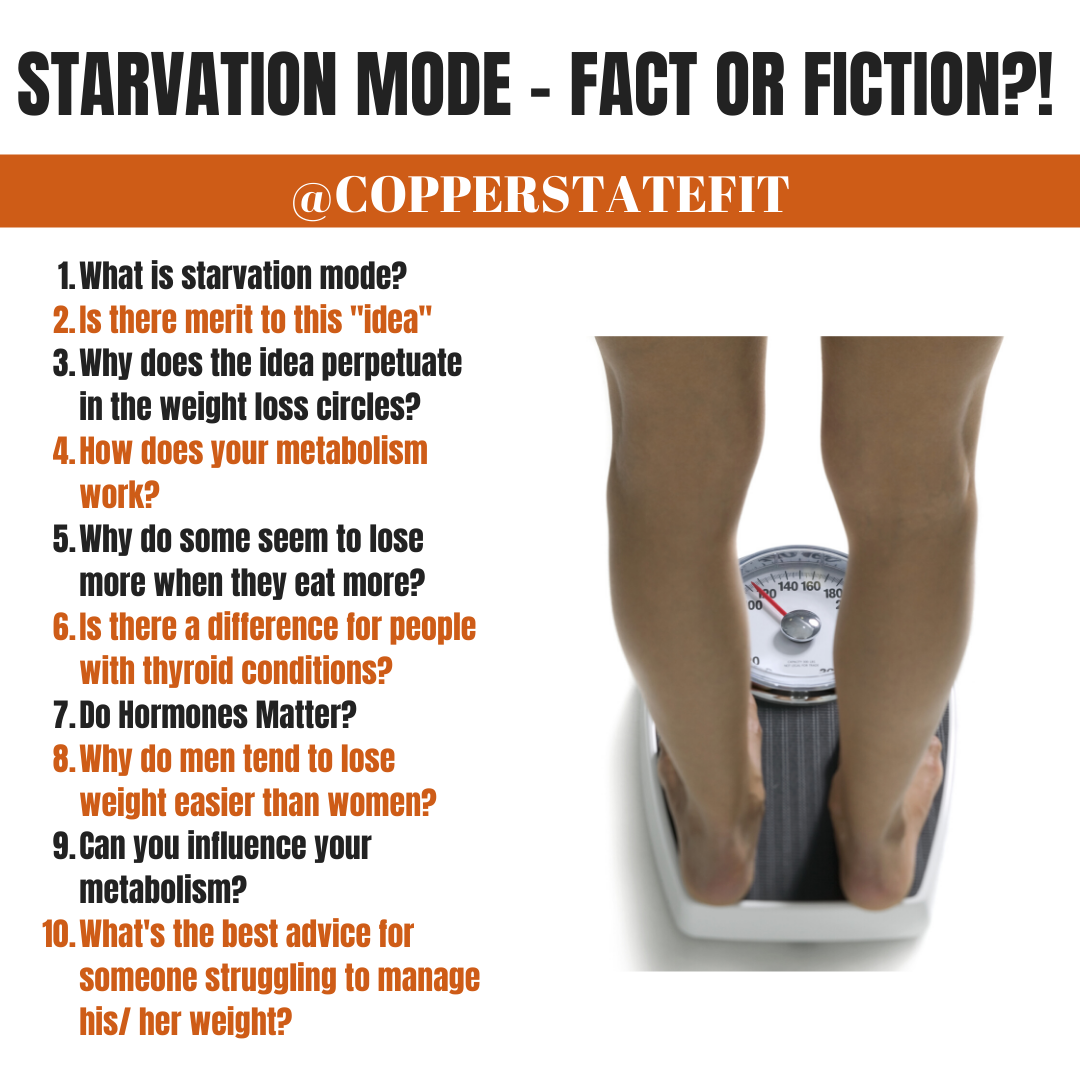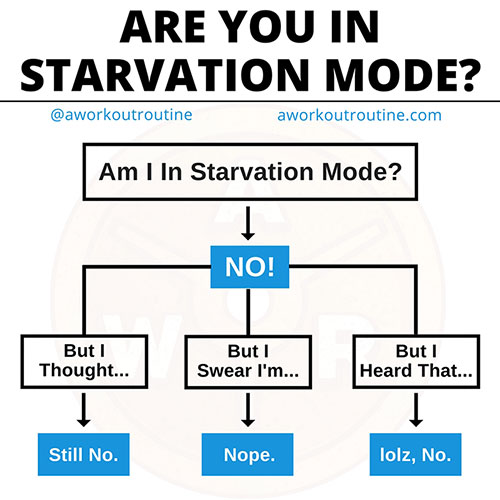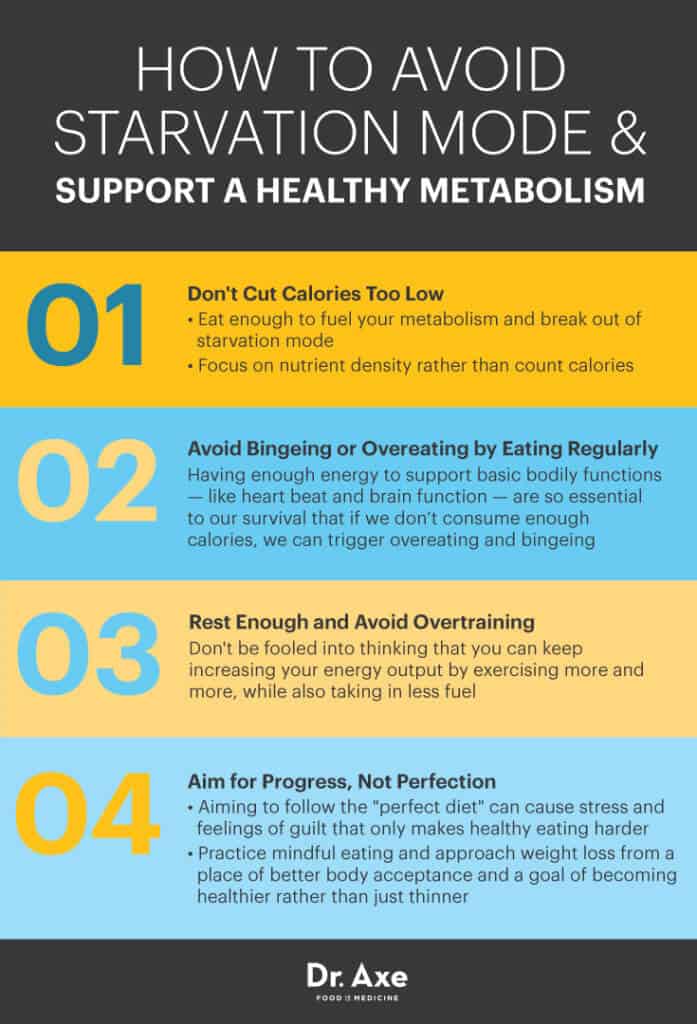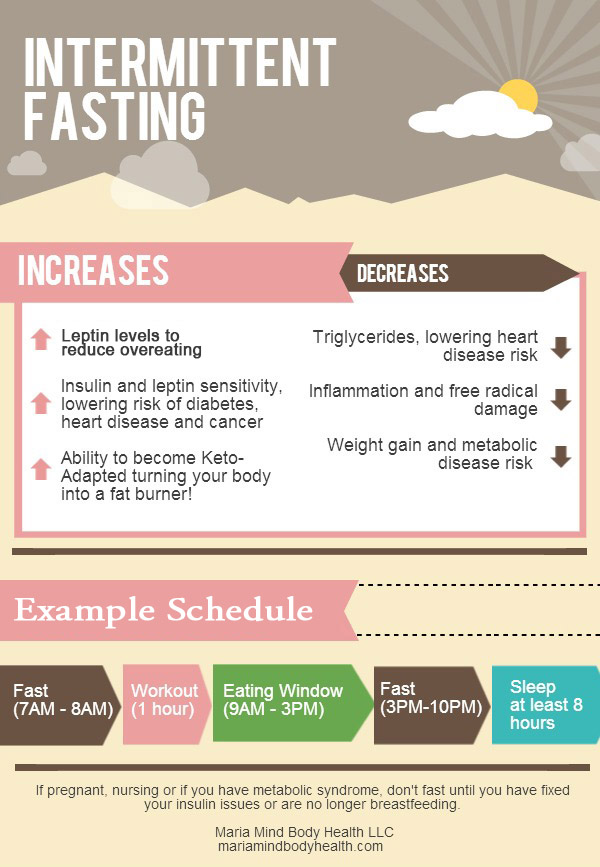How To Get Your Body Out Of Starvation Mode

Imagine your body as a resilient little engine. It's been sputtering, barely getting by on fumes. The dashboard is flashing warning lights, and everything feels sluggish. You’ve been restricting calories, maybe for a diet or due to difficult circumstances, and now you suspect your metabolism has thrown in the towel.
Getting out of "starvation mode," or more accurately, metabolic adaptation, requires a thoughtful and patient approach. It's about re-establishing a healthy relationship with food and signaling to your body that it can trust you to provide consistent nourishment. This article explores how to gently guide your body back to a place of metabolic balance and sustainable well-being.
Understanding Metabolic Adaptation
The term "starvation mode" is often used, but it's a simplification of a complex physiological process. What actually happens is metabolic adaptation. This is your body's natural response to prolonged calorie restriction.
When you consistently consume fewer calories than you expend, your body cleverly adjusts to conserve energy. It does this by slowing down your basal metabolic rate (BMR), the number of calories you burn at rest, as explained by various studies cited by the National Institutes of Health.
This can lead to feelings of fatigue, increased hunger, difficulty losing weight (or even weight gain on very few calories), hormonal imbalances, and even psychological effects like increased anxiety around food.
Recognizing the Signs
Knowing if you're experiencing metabolic adaptation is the first step. Some common signs include persistent fatigue, even after adequate sleep.
You may also experience increased feelings of coldness, particularly in your extremities. Hair loss and brittle nails can also be indicators, as can disruptions in your menstrual cycle for women, according to information published by the American College of Obstetricians and Gynecologists.
Perhaps one of the most frustrating signs is difficulty losing weight despite continued calorie restriction, or even gaining weight on a relatively low calorie intake.
The Gradual Approach: Reverse Dieting
The most recommended and generally safest approach to reversing metabolic adaptation is through a process called reverse dieting. This involves slowly and strategically increasing your calorie intake over a period of weeks or months.
The key word here is gradual. A sudden jump in calories can shock your system and lead to unwanted weight gain and digestive distress.
Start by adding a small amount of calories each week, typically between 50-150 calories. Track your weight, energy levels, and hunger cues during this time.
Calculating Your Starting Point
Before beginning reverse dieting, it's helpful to estimate your current maintenance calorie level. This is the number of calories you need to consume to maintain your current weight.
This can be tricky, as your metabolism has likely adapted, but you can use online calculators as a starting point, factoring in your age, gender, height, weight, and activity level. The Mayo Clinic offers useful resources for understanding calorie needs.
Then, carefully monitor your weight and adjust your calorie intake based on the trends you observe over a 1-2 week period.
Increasing Calories Strategically
When adding calories, prioritize nutrient-dense foods. Focus on increasing your intake of healthy fats and complex carbohydrates.
Good sources of healthy fats include avocados, nuts, seeds, and olive oil. Complex carbohydrates can be found in whole grains, fruits, and vegetables.
Continue to track your progress and adjust your calorie increases based on how your body responds. If you start to gain weight too quickly, slow down the rate of increase.
The Importance of Protein
Adequate protein intake is crucial throughout this process. Protein helps preserve muscle mass, which is metabolically active tissue.
Aim for at least 0.8 grams of protein per pound of body weight. Good sources of protein include lean meats, poultry, fish, eggs, dairy products, legumes, and tofu.
Protein also helps promote satiety, which can be helpful in managing hunger during the reverse dieting process.
Listen to Your Body
Above all else, listen to your body's cues. Pay attention to your energy levels, hunger signals, sleep quality, and overall well-being.
If you're feeling overly fatigued, stressed, or anxious, it's important to slow down or even take a break from the reverse dieting process. There's no need to rush.
Remember, this is about restoring your body's trust in you and re-establishing a healthy relationship with food.
The Role of Exercise
While nutrition is paramount, exercise also plays a vital role in supporting metabolic health. Incorporating both resistance training and cardiovascular exercise can be beneficial.
Resistance training helps build and maintain muscle mass, which boosts your metabolism. Cardiovascular exercise improves cardiovascular health and can help with calorie expenditure.
Aim for at least 150 minutes of moderate-intensity aerobic activity or 75 minutes of vigorous-intensity aerobic activity per week, as recommended by the American Heart Association. Don't forget to consult with your doctor before starting any new exercise program.
Patience and Consistency
Getting your body out of metabolic adaptation is not a quick fix. It requires patience, consistency, and a commitment to long-term health and well-being.
It may take several weeks or even months to reach a point where you feel like your metabolism has fully recovered. Be kind to yourself during this process and celebrate small victories along the way.
Focus on nourishing your body with whole, unprocessed foods, getting adequate sleep, managing stress, and staying active. With time and consistency, you can restore your metabolic health and achieve your goals.
Seeking Professional Guidance
If you're struggling to navigate the process on your own, consider seeking guidance from a registered dietitian or a qualified healthcare professional.
They can help you develop a personalized plan that is tailored to your individual needs and goals. They can also monitor your progress and make adjustments as needed.
They will also be able to rule out any underlying medical conditions that may be contributing to your metabolic issues.
A Journey of Self-Care
Ultimately, recovering from metabolic adaptation is a journey of self-care. It's about learning to listen to your body, respecting its needs, and nourishing it with kindness and compassion.
It's about shifting your focus from restriction and deprivation to abundance and nourishment. It's about building a sustainable and healthy relationship with food that will support your well-being for years to come.
Remember, your body is resilient and capable of healing. With patience, consistency, and self-compassion, you can guide it back to a place of metabolic balance and vibrant health.


















